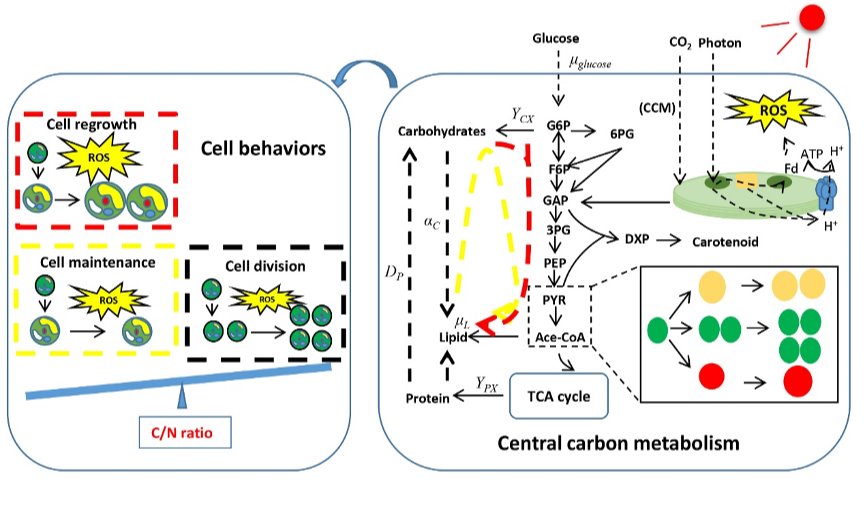Professor Steven Chen’s lab of the Institute for Advanced Study has recently published an interesting research article entitled ‘Harnessing C/N balance of Chromochloris zofingiensis to overcome the potential conflict in microalgal production’ in Communications Biology, a newly established journal of the Nature Publishing Group.
Microalgae are among the oldest and most important organisms on the earth. They have the potential to be exploited in wastewater treatment and biofuel production due to their high nitrogen and phosphorus loading, no competition with food production, high oil content and rapid growth. Moreover, microalgae are also promising for producing profitable natural pigments and lipids in the food industry. However, accumulation of high-value products in microalgae cannot take place during the rapid growth, which is the potential conflict in commercial microalgal production. To overcome such a problem, we need to comprehensively understand the cell behavior and metabolism.
Professor Chen’s lab studied the effects of light intensities and C/N ratios on microalgal growth and biomass production. They applied chemical and transcriptomic assays to demonstrate that feeding carbon source under excess light could increase the contents of the high-value products without inhibiting cell growth. They showed a fully integrated interaction among cell behavior, carbon partitioning, carbon availability and path rate of central carbon metabolism could practically overcome the production conflict of the microalgae (Figure 1). The supply of exogenous carbon is an important factor in microalgal production, which provided necessary energy and carbon skeletons for cell cycle progression and facilitated lipid and carotenoid accumulation. The elevated carbon availability and active path rate of precursors were determinant for product biosynthesis; the former exhibited a superior potential. As protein content reached the threshold value to confer survival advantages, carbon availability became a major limiting factor for product biosynthesis and cell reproduction. Based on the integrated interactions of culturing conditions, regulating C/N balance by feeding carbon source under excess light increased contents of the high-value products remarkably. The findings provided a new orientation to achieve great productivity improvements in microalgal production.

Figure 1 Schematic diagram of relationship between central carbon metabolism and cell behavior.
This research was financially supported by the Key Realm R&D Program of Guangdong Province (No. 2018B020206001) and Science and Technology Innovation Commission of Shenzhen (No. KQTD20180412181334790).
Paper link: https://www.nature.com/articles/s42003-020-0900-x


